What is User Onboarding?
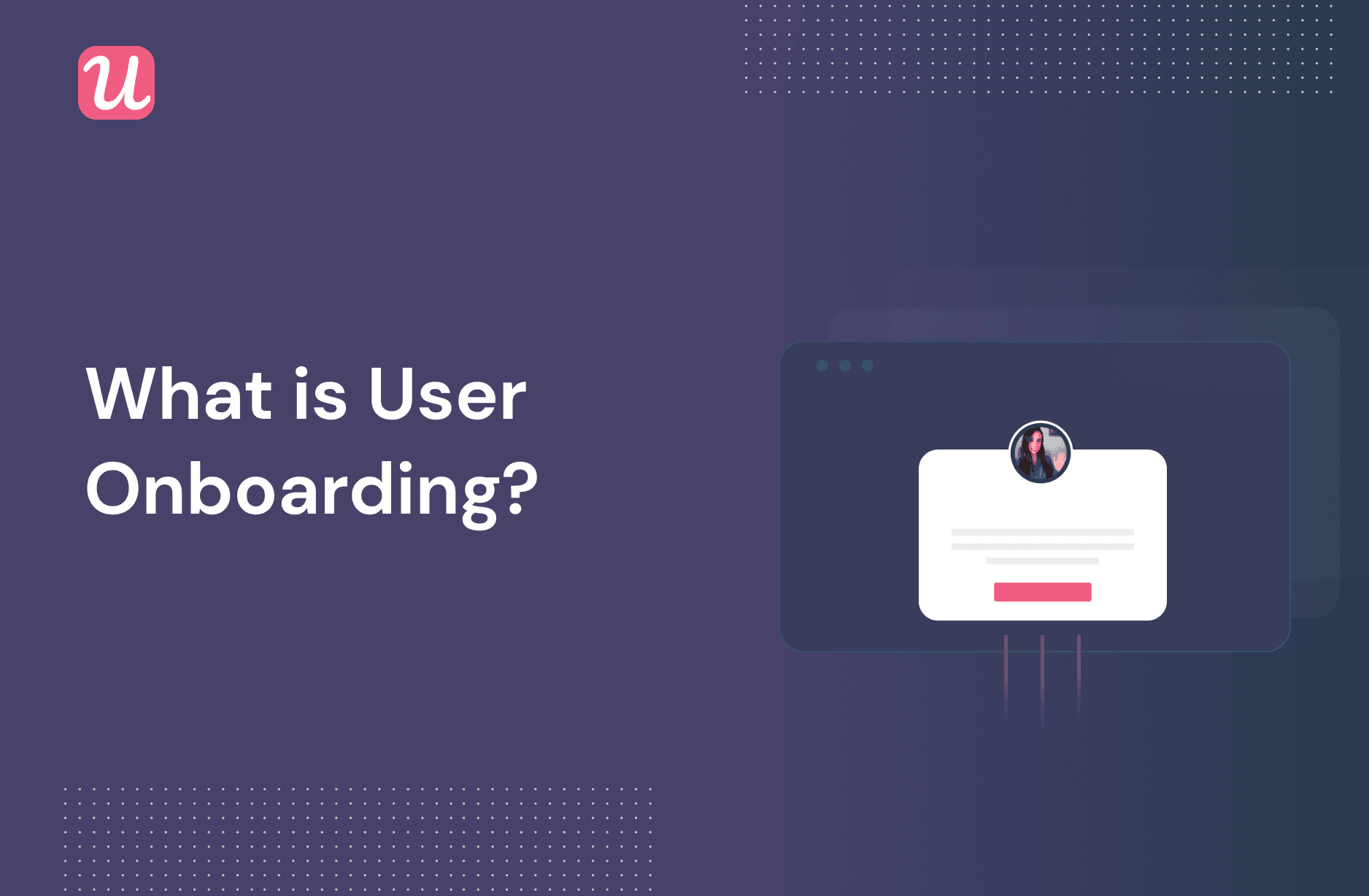
If you’ve ever heard the term “user onboarding” and felt confused as to what it meant, you’re not alone.
With so many different definitions of onboarding bouncing around, ranging from “customer education” to simply “making the user feel welcome,” it’s no wonder that people are struggling to articulate what onboarding really is.
We regularly talk to hundreds of SaaS companies about their onboarding across the whole user journey. So it’s a subject we understand quite well. Now let’s show you what user onboarding is.
TL;DR
- User onboarding is the whole process of educating your new customers to get the most out of your product.
- This process shouldn’t end after activation. Instead, it should continue across the entire customer lifecycle.
- Metrics that track the quality of your onboarding include Time-To-Value, Activation, Retention, and Profitability.
- Don’t forget to segment your customers, otherwise, you’ll end up with a generic, linear product tour that will turn them off.
- The ingredients of a typical SaaS onboarding process include a signup flow, a welcome screen, checklists, tooltips, emails, and webinars.
- Userpilot will let you build a powerful onboarding flow without needing to code.
![]()
Try the best user onboarding tool for your SaaS now!

What is user onboarding in SaaS?
User onboarding can be defined as the process of educating customers about how to derive value from your product.
The term is most commonly used in the SaaS world to describe primary onboarding, which means teaching a new customer about a product they’ve just started using.
What are the goals of user onboarding?
User onboarding is a crucial phase for SaaS companies as it can make or break the further interactions that customers will have with your product or brand. With that being said, what’s the goal of user onboarding? Let’s clarify!
The goals of primary onboarding are normally referred to as:
- The Aha Moment: the instant when the customer understands the value of your product.
- Activation: the moment when the new user experiences the value of your product personally.

Is user onboarding important longer-term?
Our State of SaaS Onboarding report for 2022 found that 96% of SaaS businesses are using at least 1 in-app onboarding element. This suggests that the market as a whole is increasingly aware of the value of onboarding.
What’s often forgotten, however, is that onboarding is something that should never end!
Educating a customer about your product is just like learning in real life. It shouldn’t stop after school, but instead should be a lifelong experience.
To illustrate what I mean, releasing an onboarding flow to explain a new feature to a customer who’s been around for 1 year would be classed as secondary onboarding.

In this example, Hubspot asks a user if they are tired of copying and pasting, and uses that pain point to push a secondary template feature.
That’s a pain point that’s unlikely to be perceived as problematic by someone right at the beginning of the customer lifecycle.
So at this point, you’re probably wondering…
What makes “good” user onboarding?
There are two ways we can answer this question.
Firstly, what are the metrics that show your SaaS business that it’s doing a good job on onboarding?
Secondly, what are the big-picture strategies you can use to improve those metrics?
Let’s take those points one at a time.
Metrics that validate successful user onboarding
The best metric for assessing primary onboarding is Time-to-Value. It is a critical metric that measures the amount of time it takes your new customers to get value from your product or service.

The lower it is, the better your primary onboarding flow is likely to be.
Next, we have the so-called pirate metrics framework by Dave McClure.

Of these, Activation and Retention are the most correlated with the effectiveness of your onboarding process.
The more your new customers activate, the better the job your product marketing team is doing on onboarding.
Later on in the customer journey, the longer you retain users and the fewer of them churn, the better your onboarding starts to look.
Finally, there’s also the bottom line to look at, since it’s so strongly bound up with activation and retention rates in SaaS businesses.
Ultimately, the more customers you activate and retain, the longer you will receive monthly subscription payments from each of them.
What are the elements of great user onboarding experiences?
Every business is different, so there is no universal onboarding process that will work for all businesses all of the time.
What follows is a list of the best tactical options that most SaaS businesses should consider for a successful onboarding process.
Signup flow
This is where primary onboarding begins: the point where the user first creates an account on your app and logs in for the first time.
There are two schools of thought about what it takes to make a great signup flow.
For most businesses, keeping sign-up friction as low as possible is the way to go. In other words: get out of your customer’s way, and let them sign up as quickly and efficiently as possible.
Look at this example of a frictionless signup form on Airtable.

It’s short and to the point. The UX is minimalistic and even a little boring; there’s only one thing to do, namely sign up.
For people who are in a hurry, Airtable also lets you sign up via a third party, in this case via your Google account.
But this frictionless approach doesn’t work for all businesses. Sometimes, it’s in your interest to have your signup process be long and complicated.
This might be true if your product is of life-or-death importance to users, or if your installation is long and technical.
The latter is true for Fullstory, hence their signup flow is full of technical modals like this:

Onboarding welcome screen
This is what your customers see immediately after signing up for your platform.
Welcome pages are normally modals, which means they take up most of the customer’s screen so as to ensure they get their attention.
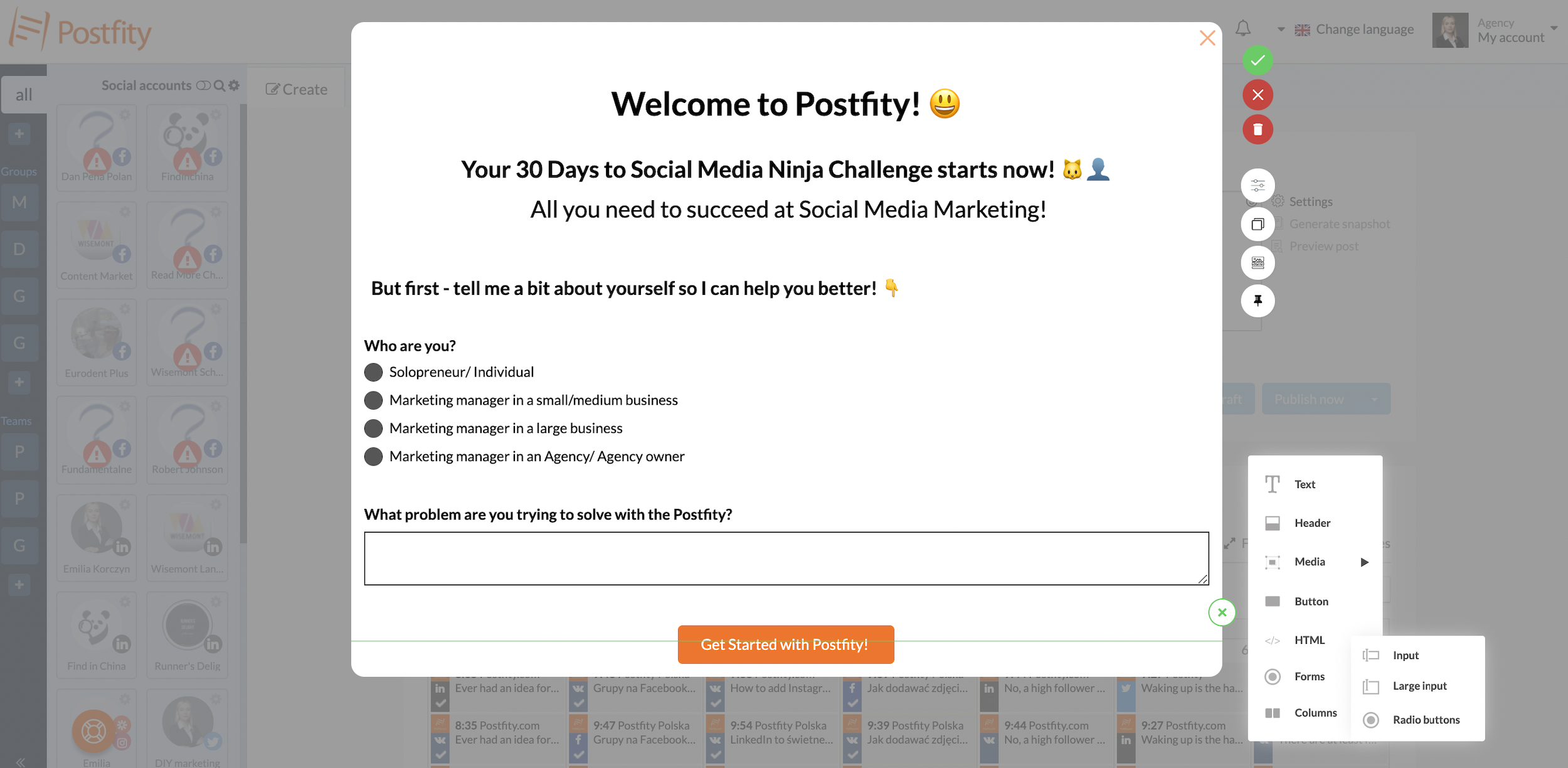
To ensure your customer truly feels at home, follow these best practices:
Include a smiley photo of one of your team members
Ideally, it’s someone from customer support or customer success, so users know that they will interface with friendly people.
Greet your customer by their first name
Hopefully, this is something that you picked up in the signup stage of onboarding. They’ll be sure to appreciate your personal touch.
Reiterate the value that your product will provide
The sooner your customer understands its value to them specifically, the sooner they will experience that Aha Moment which we talked about.
Outline any next steps
Is it time for a product tour? Or would it be best to look at some templated demo content? Only you will know, but customers will appreciate the clarity.
Putting all that together, you should end up with something that looks like this welcome screen from the social media scheduling app Kontentino:

Last but not least: don’t forget to use your welcome screen to segment your users.
This is a great time to ask them a couple of questions to figure out which user cohort they belong to, and then customize the rest of their experience accordingly.
For more on how to do this, check out this post.
User Onboarding Checklists
A checklist is a great tool for giving your customers small tasks so that they don’t forget them.
What those tasks are will vary depending on an individual segment’s needs, but they should be simple things that users can do in order to experience the value of your product first-hand.
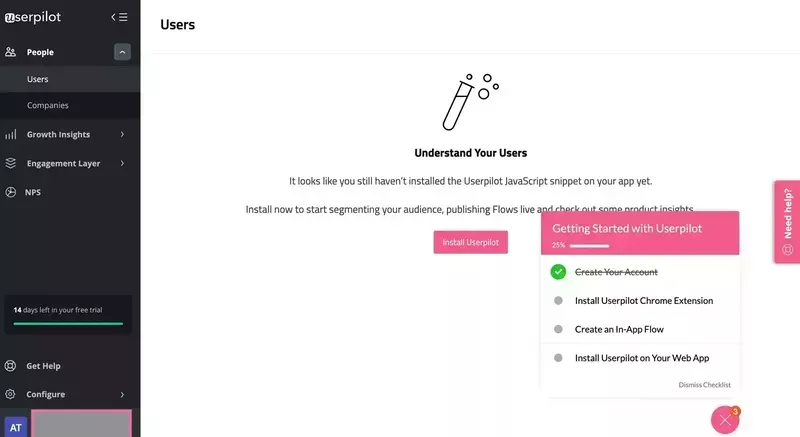
That way, once the initial checklist in primary onboarding is complete, activation will be a given.
To make an awesome checklist, consider the following tips:
- Use a progress bar to show users what they’ve done already, and what’s still to do.
- Give customers credit for a task they finished before seeing the checklist, such as signing up.
- Keep the checklist short: 4-5 items are plenty.
- Ensure that your copywriting focuses on action, so words like “Connect account” or “Schedule post.”
Even after customers have activated, you can continue to give new checklists to active users throughout the customer journey, whenever you want to point them toward a new secondary feature.
Tooltips
These are short, text-based explanations that pop up whenever the user hovers over a particular UI element.
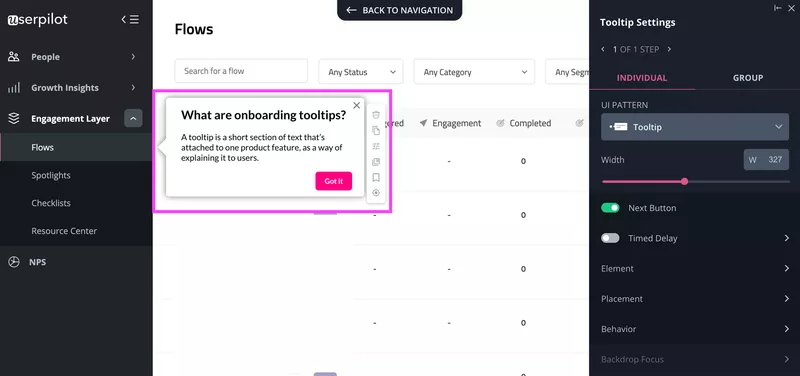
They come in two forms:
- The native tooltip, is so-called because it becomes a standalone, “native” part of your UI.
- Tooltips that are part of a larger flow of onboarding UI elements are all linked together.

Once your customer is done with the welcome screen, you can send them a checklist outlining the necessary activation tasks, and then an automated flow that walks them through each of those tasks.
It’s that flow that will contain tooltips, together with other elements like hotspots or driven actions.
Keeping the lines of communication open
Notwithstanding the importance of the automated walkthroughs and flows you can create from the above onboarding elements, there’s still value in talking to your customers directly.
Two tools that are really helpful for this purpose during onboarding are emails and webinars.
Onboarding emails
There are a couple of interesting use cases to discuss here.
Firstly, it’s advisable to send a welcome email sequence whenever a new customer signs up for your platform.
If you had a sequence of 4 welcome emails, for example, they might include:
- An email to say thanks which comes directly from your CEO
- An invitation to a webinar with an industry expert
- A case study about your largest user
- A personalized referral link to invite their friends
The second use case is email drip campaigns, which are great at reactivating users who haven’t logged in for a few months.
Check out this post for some tips on how to write drip emails.
Onboarding webinars
Few things are as effective as video content for creating a sense of connection with customers.
Webinars are valuable at every stage of onboarding. Here are some possible use cases:
- Creating a sense of community for new users who have lots of questions
- Showing off a valuable new secondary feature to customers who have been with you for a year
- Invitation-only webinars for power users which capitalize on a sense of exclusivity to upsell a new product line
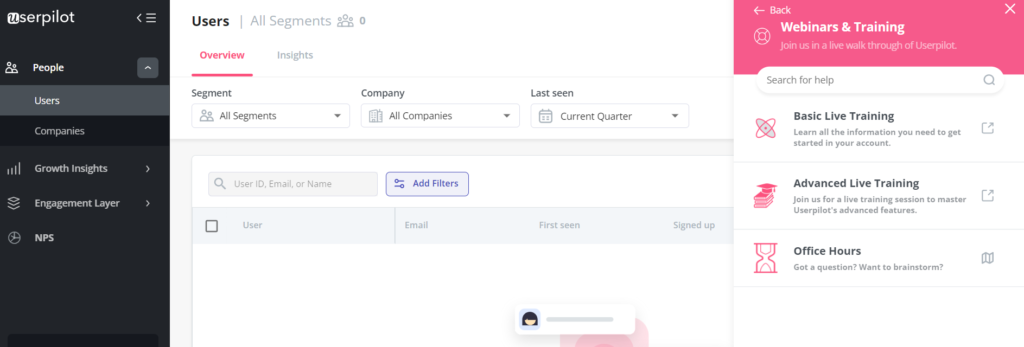
For more information about how to use onboarding webinars, check out this post.
So what might your onboarding look like if you combine all the above strategies and tactics?
Let’s look at a case study.
User onboarding example: Box
Box is a tool that offers cloud-based solutions around content management, file sharing, and internal company collaboration.
Box’s onboarding is a work of art 🙂
It begins with a signup page:

Note the simple, frictionless interface. Box wants to make signing up as easy as humanly possible.
If you look at the checkmarks at the top right, Box is also reiterating the benefits of their product, which is another best practice.
Once you log in, you’re greeted with a quick product tour:

This tour focuses on the benefits of the product, not the features.
It’s well understood in marketing that this is significantly more appealing to customers than a dry list of all the things your product can do.
Next, you’re given a checklist:

By default, your free tour of Box lasts 14 days. But, for every checklist item you complete, Box will extend your free trial a little further.
This is a nice bit of gamification and provides real motivation to users to finish the checklist.
And what items did Box choose to put on the checklist?
You guessed it. The very things that will make you activate as a customer. Genius.
All in all, this is an expertly crafted user onboarding experience. Is it any wonder that Box earned $770M in revenue in 2020?
Top strategies to improve user onboarding
Now that you know a lot about user onboarding and its importance, let’s see how you can improve your onboarding process and delight customers right from the beginning.
Here are a few strategies for you.
#1 Segment customers to provide personalized experiences
The most important strategic insight that anyone looking to boost their onboarding can get is that segmentation is absolutely essential.
Segmentation means dividing your users up into distinct groups according to their individual needs and then serving them with a product experience that is as closely tailored to those needs as possible.
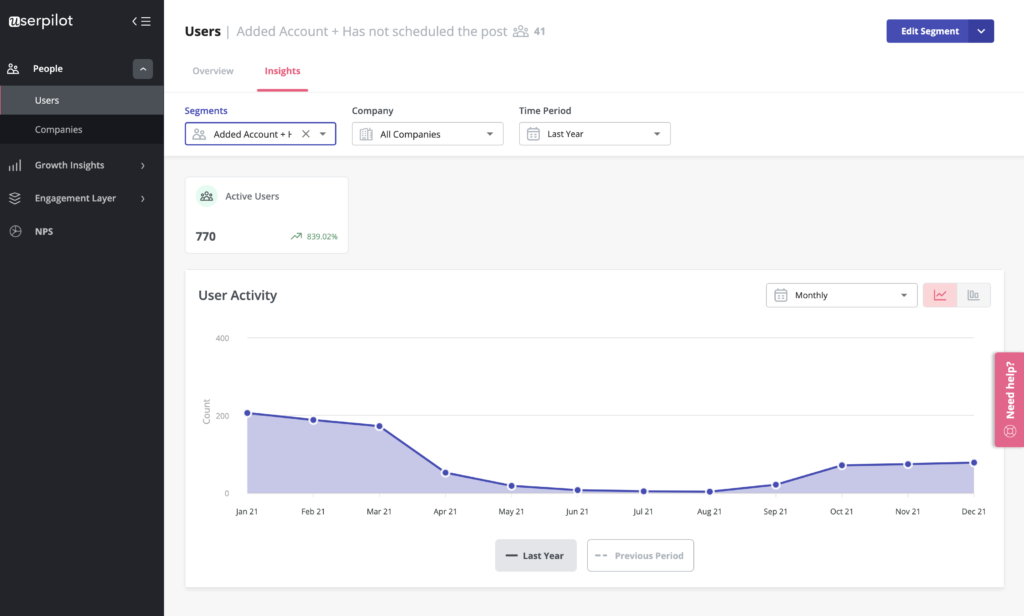
Think about it:
If you’re an account executive on a sales team, you’re not going to want to see the same features in your sales tool that your CEO does, for example.
Features that affect the big picture of the business are never going to be as interesting as the features that allow you to hit your personal sales quota.
If you don’t segment your users, you’re likely to make a big mistake that SaaS teams often make in their onboarding: namely creating linear product tours.
#2 Replace boring product tours with interactive walkthroughs
Let’s admit it! Product tours are boring and most users hate them. So don’t insist on showing all your features to all your customers, in the same way, each time, regardless of their individual needs.
Users want their personal needs to be respected.

The solution?
Replace your product tour with an interactive walkthrough that responds to your user’s in-app behavior in real time.
You’ll need to fill your onboarding walkthrough with little hooks, hints, and checkpoints that increase your customers’ motivation to use your product.
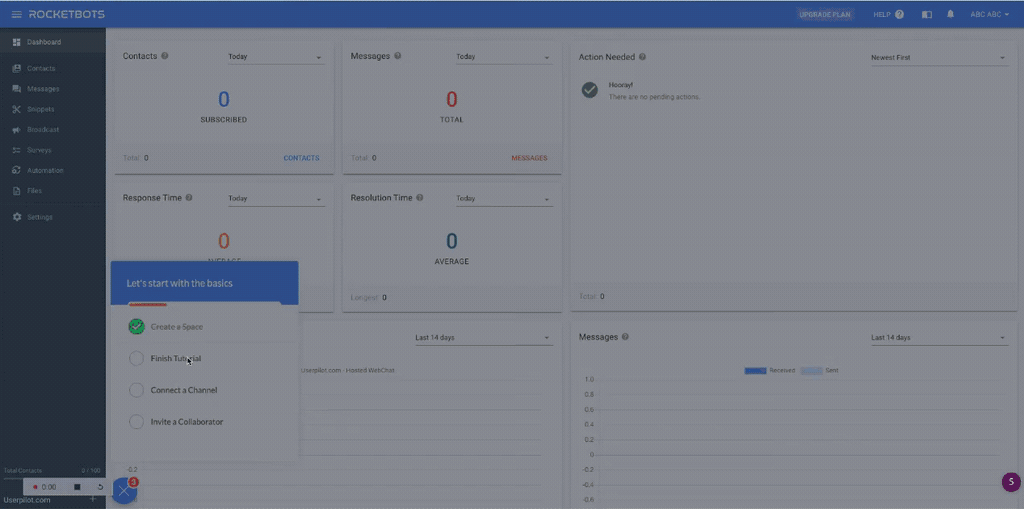
After all, learning by doing is much more engaging for users than reading dry text boxes all day.
The ultimate user onboarding tool – Userpilot
If you want to build a user onboarding system like Box’s for your own company or even better, you should consider looking into software like Userpilot. It is a product growth platform that offers user onboarding, user analytics, and user feedback functionalities.
Remember those “hooks” that we talked about earlier? So checklists, tooltips, welcome pages, and such?
Userpilot will let you build all those (and more) without you needing to write a single line of code. Yes, really.
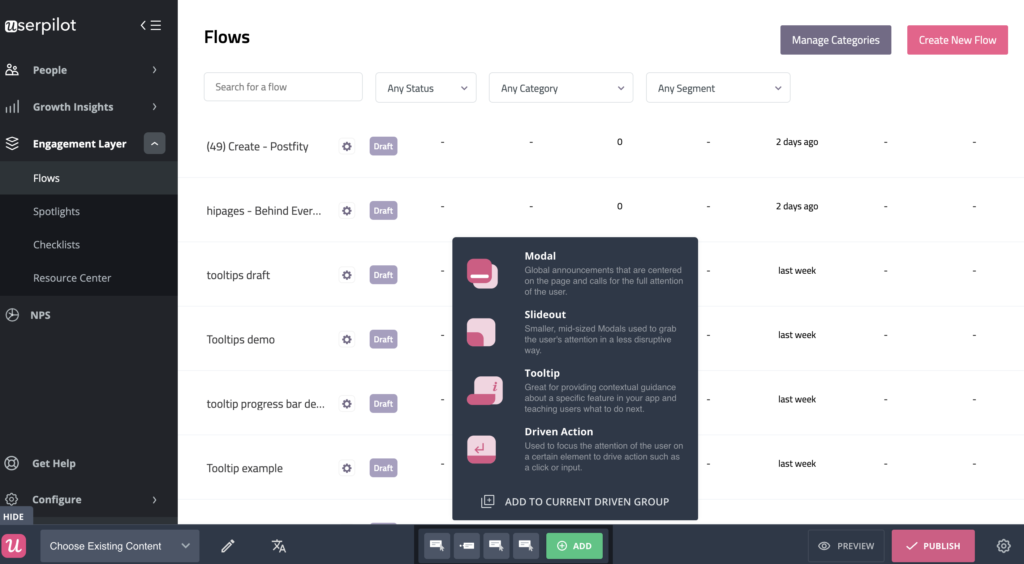
That means that you’re really only limited by your imagination when using Userpilot.
For example, you can string together 2 tooltips with a driven action and a modal, and then render them in colors and fonts that match your brand perfectly.
To ensure that your onboarding doesn’t turn into a generic, linear product tour, Userpilot also comes with powerful segmentation tools.
That way, you can offer an individualized experience to each customer segment.
You can segment by things like location, company size, in-app behavior, device, account age, NPS score… and more!
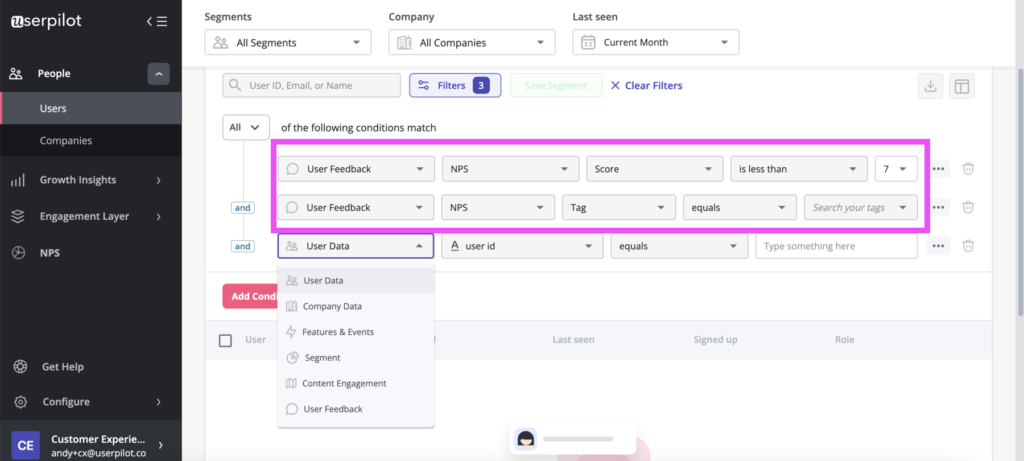 You can also set up goals that customers need to complete for their jobs to be done and track their progress. By combining this insight with other analytics, you can easily detect friction points and see where customers are dropping off.
You can also set up goals that customers need to complete for their jobs to be done and track their progress. By combining this insight with other analytics, you can easily detect friction points and see where customers are dropping off.
Conclusion
Great user onboarding is the key to happy customers and meaningful interactions with your product.
If you want to nail your user onboarding, segment customers, and create personalized onboarding experiences with a variety of UI patterns, then check Userpilot. Get a free demo to get started!
![]()
Try the best user onboarding tool for your SaaS now!


